
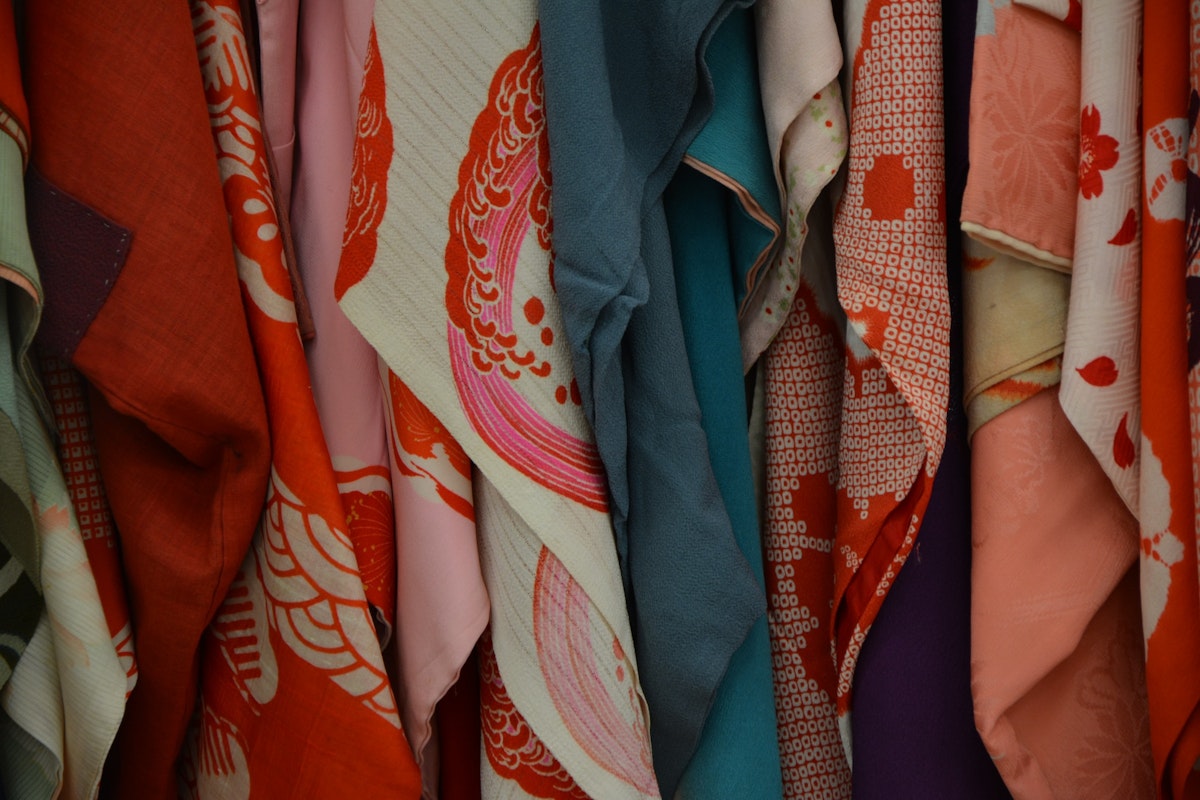
Japan, often recognized for its modern marvels like high-speed bullet trains, neon-lit cityscapes, and cutting-edge technology, holds a rich, deep, and compelling narrative just beneath its futuristic veneer. This narrative unfolds in the silent language of traditional Japanese textiles and fabrics, a captivating form of cultural expression that dates back centuries. These textiles, embodying a significant aspect of the country's heritage, offer a unique lens through which to understand the historical and cultural journey of Japan - a journey that isn't immediately obvious amidst the hustle and bustle of its vibrant cities.
Traditional Japanese textiles, such as the refined and intricate kimonos or the welcoming noren curtains, carry within their threads stories of seasons, community, and the passage of time. Each meticulously chosen color and carefully crafted pattern weaves a narrative that transcends time, resonating with the ethos of an ancient civilization and its enduring connection to nature and harmony. This exploration of traditional textiles isn't just about appreciating their undeniable aesthetic beauty, but also about understanding the philosophies and cultural significance that they embody. Stepping into this world provides a unique and intimate glimpse into the Japanese way of life, beyond what is commonly perceived. So, as you prepare to explore Japan, let the allure of traditional textiles draw you in - there's a beautiful, intricate, and profoundly captivating cultural journey waiting to be discovered.
The kimono, an iconic symbol of Japanese culture, embodies the very essence of beauty and elegance. The word 'kimono' translates to a thing to wear,' yet these traditional garments far exceed their utilitarian purpose. Kimonos are meticulously handcrafted, often from silk, but also from fabrics like cotton and wool, and are composed of a single bolt of fabric known as 'tan.' The result is a robe that is long, straight-lined, and T-shaped, with collars and wide sleeves.
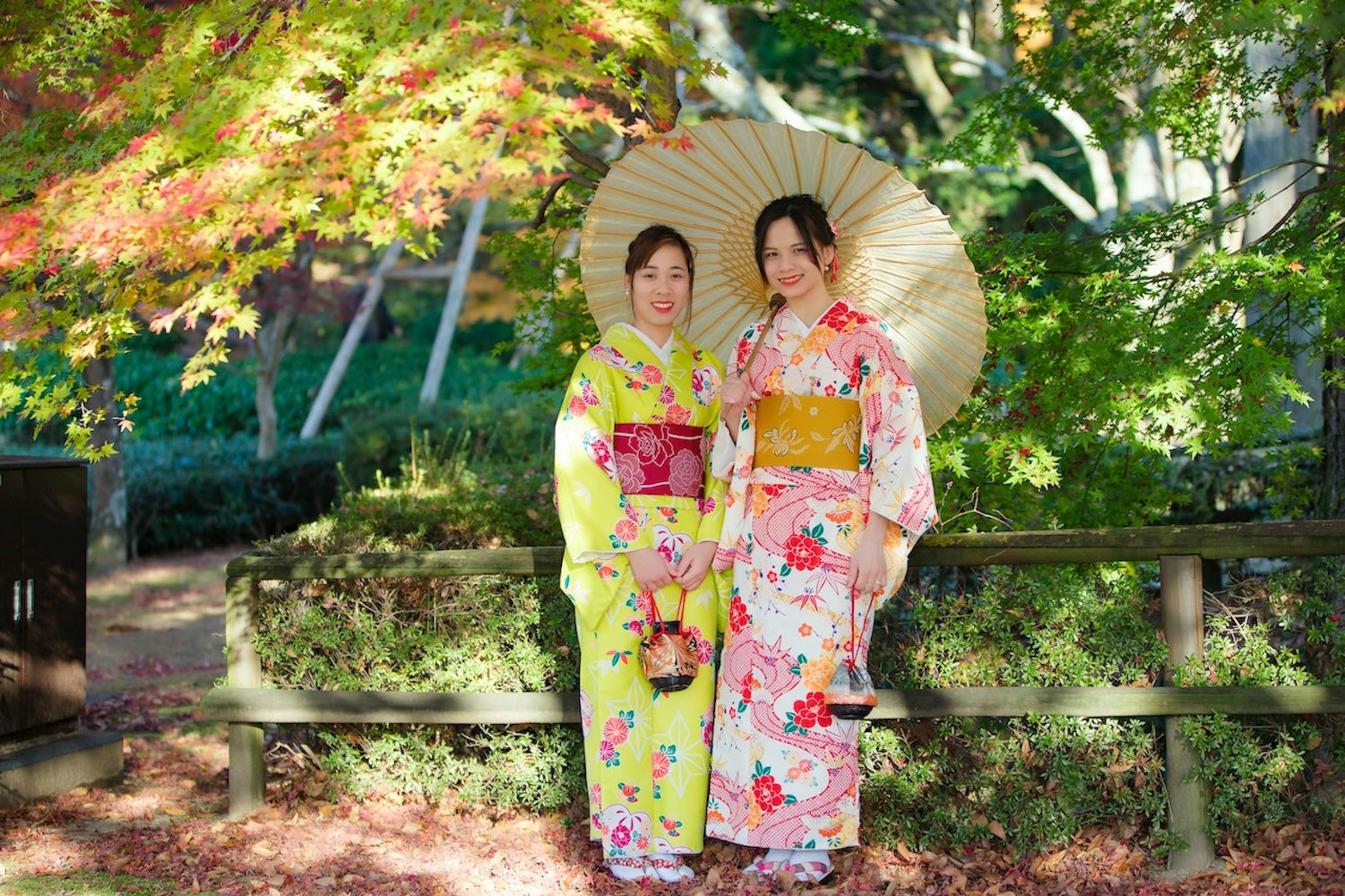
Image Credit: Nguyen Hung
What truly sets kimonos apart are their diverse and intricate designs, with each color, pattern, and motif carrying significant symbolism. The motifs often reflect the natural world, including plants, birds, and the changing seasons. For instance, cherry blossoms, a symbol of spring, might be used to reflect renewal and the fleeting nature of life, while maple leaves, a common autumn motif, might signify the passing of time. The color and pattern of a kimono can also indicate the age, marital status, and even the mood of the wearer, making each kimono a beautiful and unique form of personal expression.
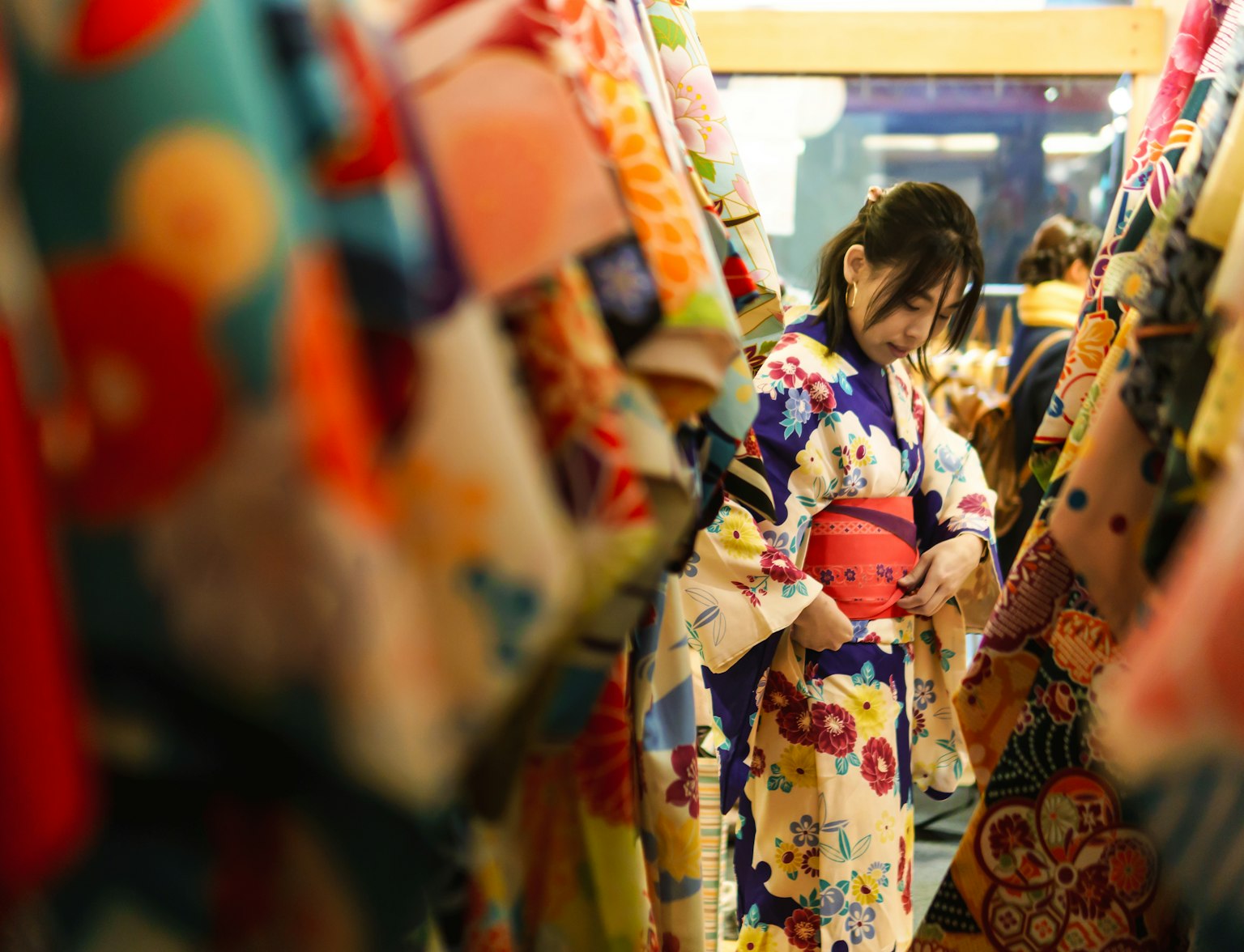
Learn how to make your own kimono.
Kimonos play a significant role in Japanese society, far beyond their function as attire. They are steeped in tradition and are worn for different occasions, each style carrying its own rules and connotations. The formal kimonos, known as 'furisode,' with their long swinging sleeves, are worn by unmarried women, primarily for coming-of-age ceremonies. 'Uchikake,' a highly decorated type of kimono, is often chosen for wedding ceremonies, while the black 'kuro-tomesode' is a formal choice for married women attending weddings.
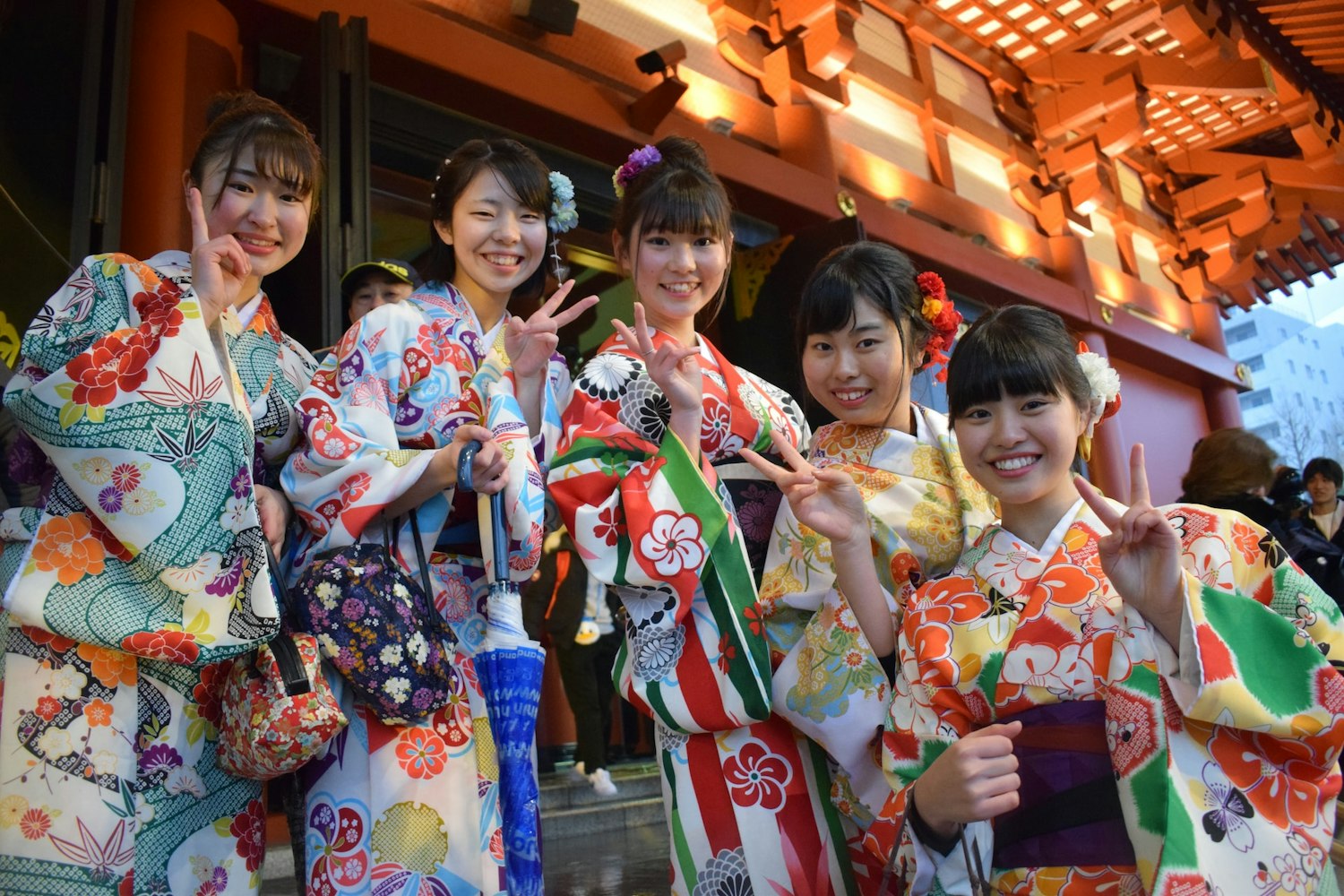
Image Credit: Sofia Monteiro
Importantly, the art of wearing a kimono, known as 'kitsuke,' is a practice that requires skill and knowledge, with each fold and tie carrying meaning. Furthermore, the traditional tea ceremony, one of the pillars of Japanese culture, invariably involves the wearing of kimonos, emphasizing their pivotal role in social events. In the modern era, the kimono continues to be an important part of Japanese culture. Despite the prevalence of Western-style clothing for everyday wear, kimonos remain popular for special occasions and events, continuing to uphold a tradition that has been celebrated for centuries.
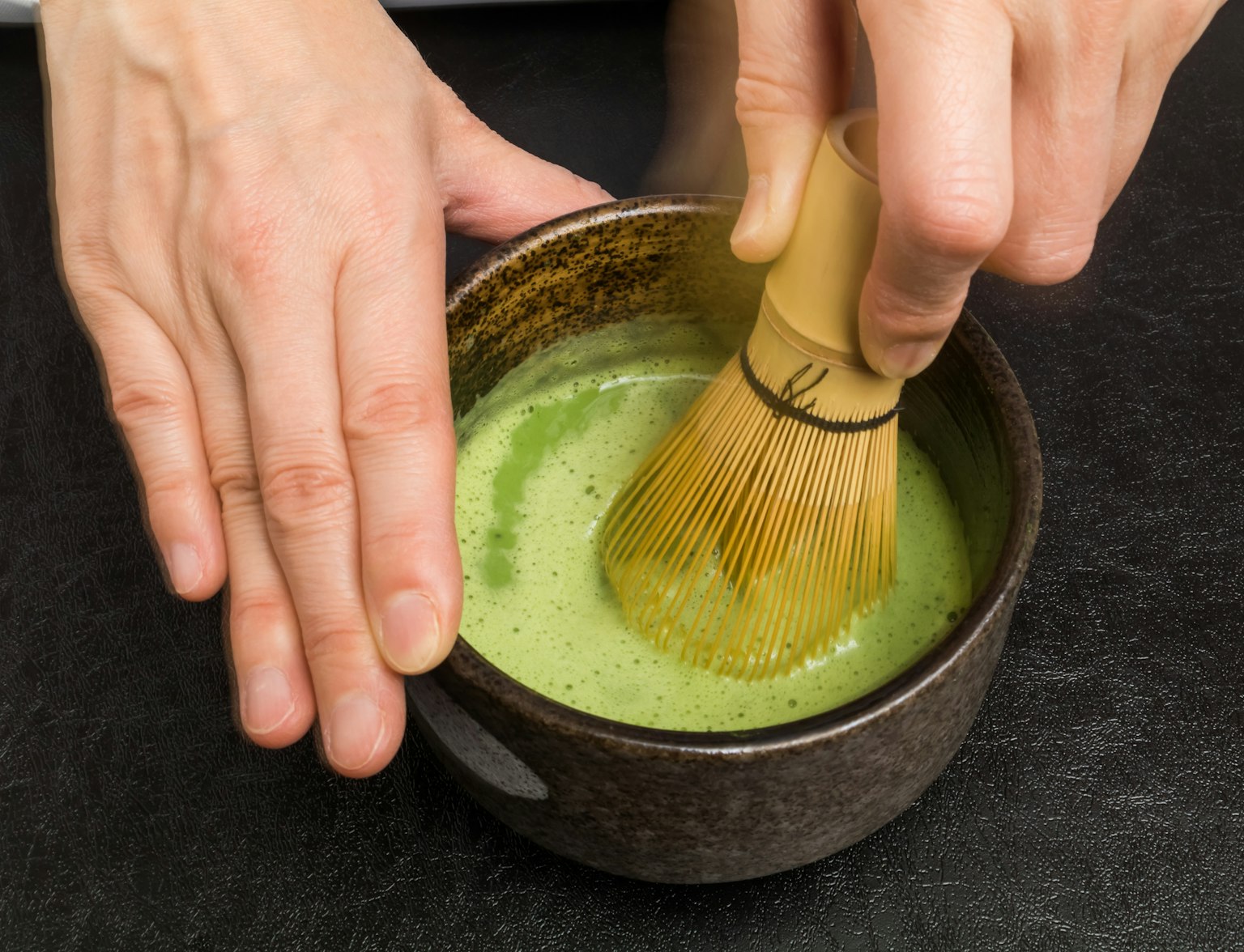
Experience wearing kimono during a traditional tea ceremony.
Noren, traditional Japanese fabric dividers, offer a striking yet often overlooked element of Japanese culture. These are rectangular cloths split down the middle, hanging down from a horizontal rod positioned at the entrance of shops, restaurants, and homes. Serving a practical purpose, noren acts as a curtain to shield interiors from the elements, provide privacy, and denote the business's open or closed status. However, the cultural significance of noren extends beyond these utilitarian functions.
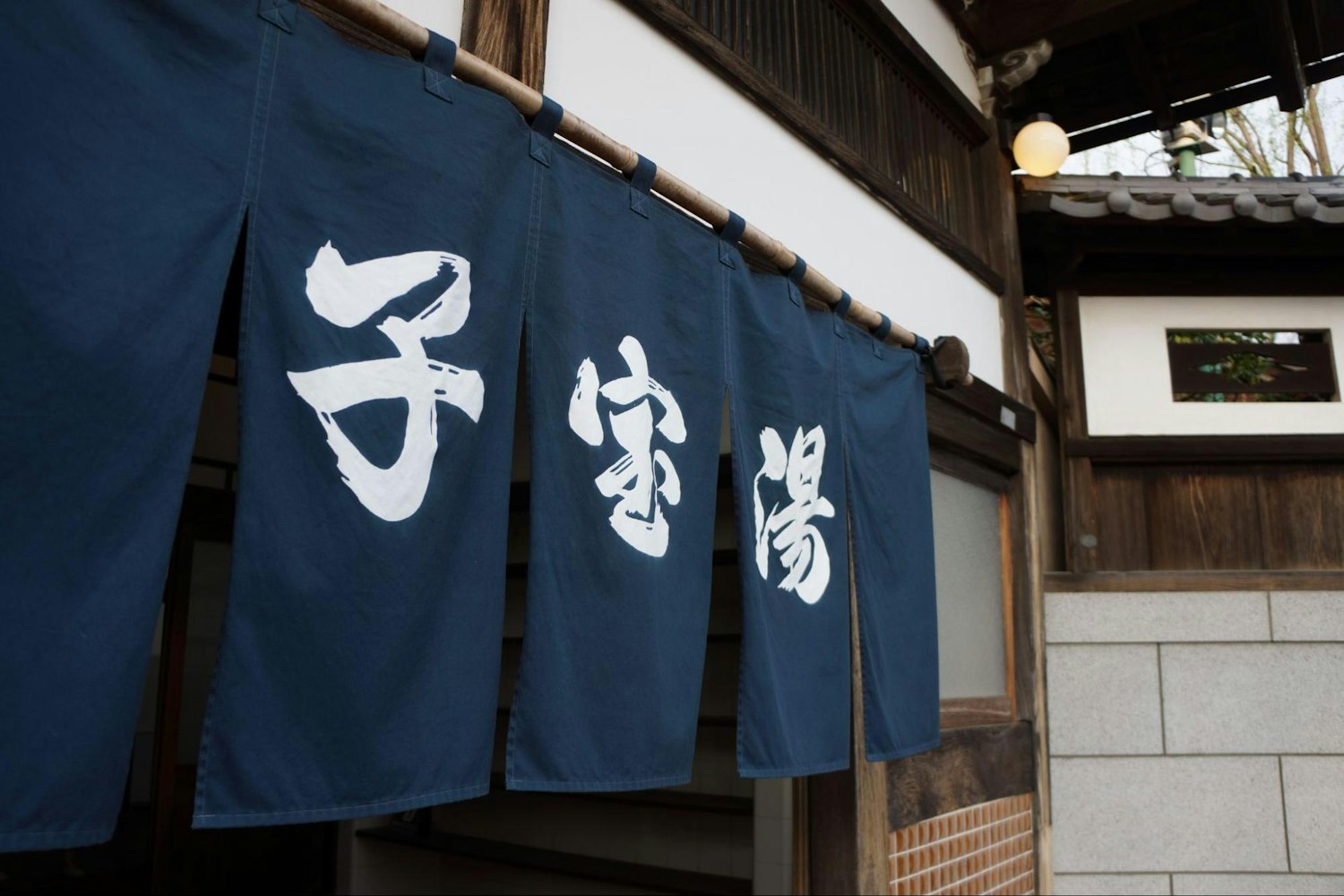
Traditionally, noren are adorned with the name, logo, or symbol of the establishment, intricately designed and often hand-dyed. The images or kanji characters used aren't chosen lightly; they embody the spirit of the business or home, giving a glimpse into what lies behind the noren. These textile dividers serve as silent communicators, establishing a non-verbal dialogue with passersby and subtly drawing them into the world behind the curtain.
In the realm of Japanese businesses, noren have a pivotal role. A fresh noren hanging outside a business symbolizes its inauguration or reopening. Over time, the noren weather, and its changing appearance speaks to the establishment's resilience and consistency. A well-worn noren often denotes a long-standing, reputable business that has weathered many seasons.

Image Credit: TJ Bruder
In the context of homes, noren are used to divide rooms or shield doorless entrances, adding an element of privacy while still maintaining a sense of openness and flow throughout the space. While the practical aspects of noren are certainly important, it's the emotional resonance they create that's truly fascinating. Like a threshold between public and private, known and unknown, the noren invites curiosity, marking the transition from the bustling street into a more personal space. Thus, noren function not only as physical dividers but also as psychological markers of space, embodying the delicate balance between openness and discretion that characterizes Japanese society.
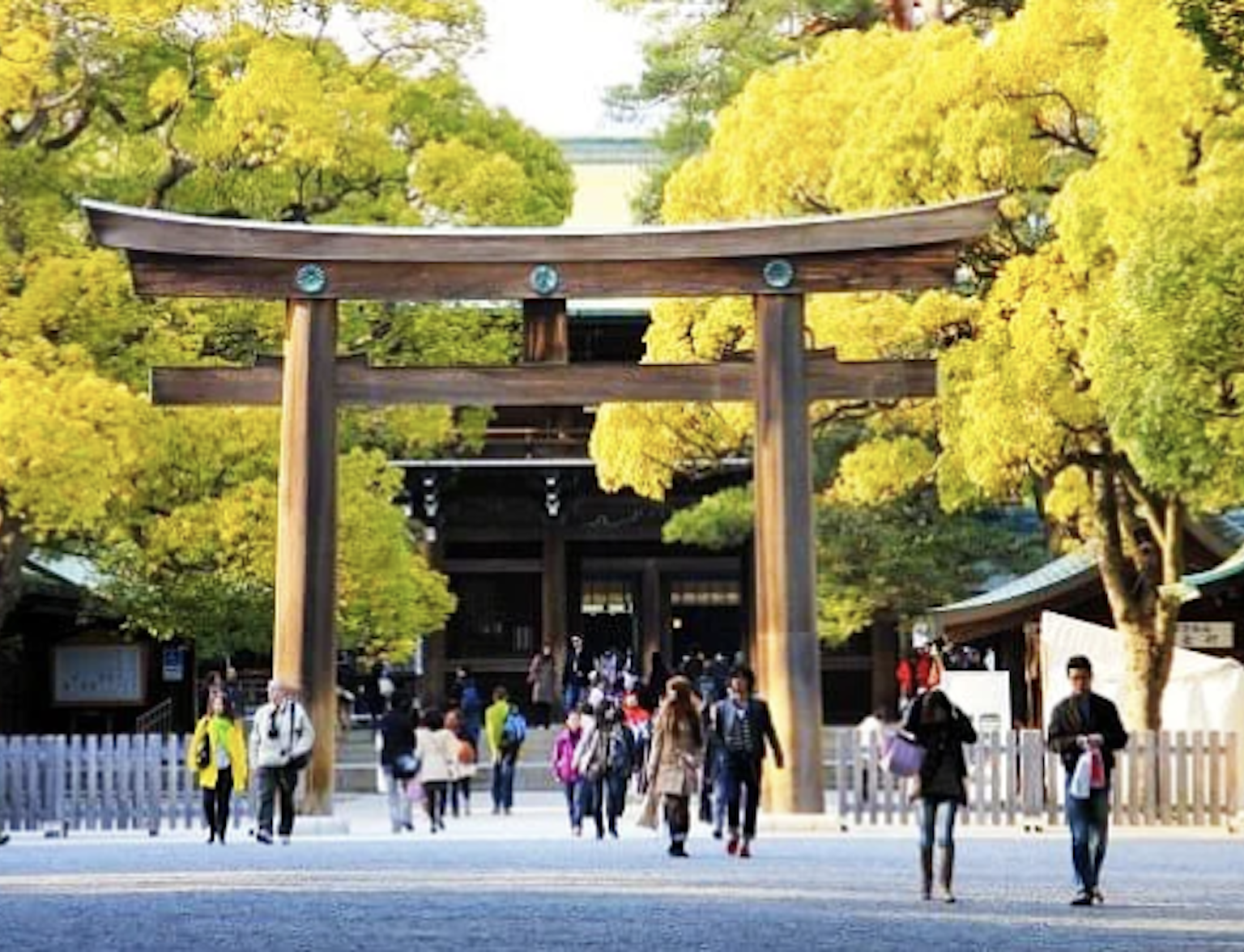
Wander around Tokyo and see which businesses have stood against time.
Boro and Sashiko trace their origins to the Edo period in northern Japan, a region known for its harsh winters. During this era, cotton was a valuable commodity, and the concept of wasting fabric was unimaginable. Hence, the art of Boro, which translates to 'rags' or 'tattered cloth', came into being. Boro refers to textiles that have been mended and patched over many generations, giving life to a patchwork of fabrics that not only provide warmth but also tell a story of resilience and resourcefulness.
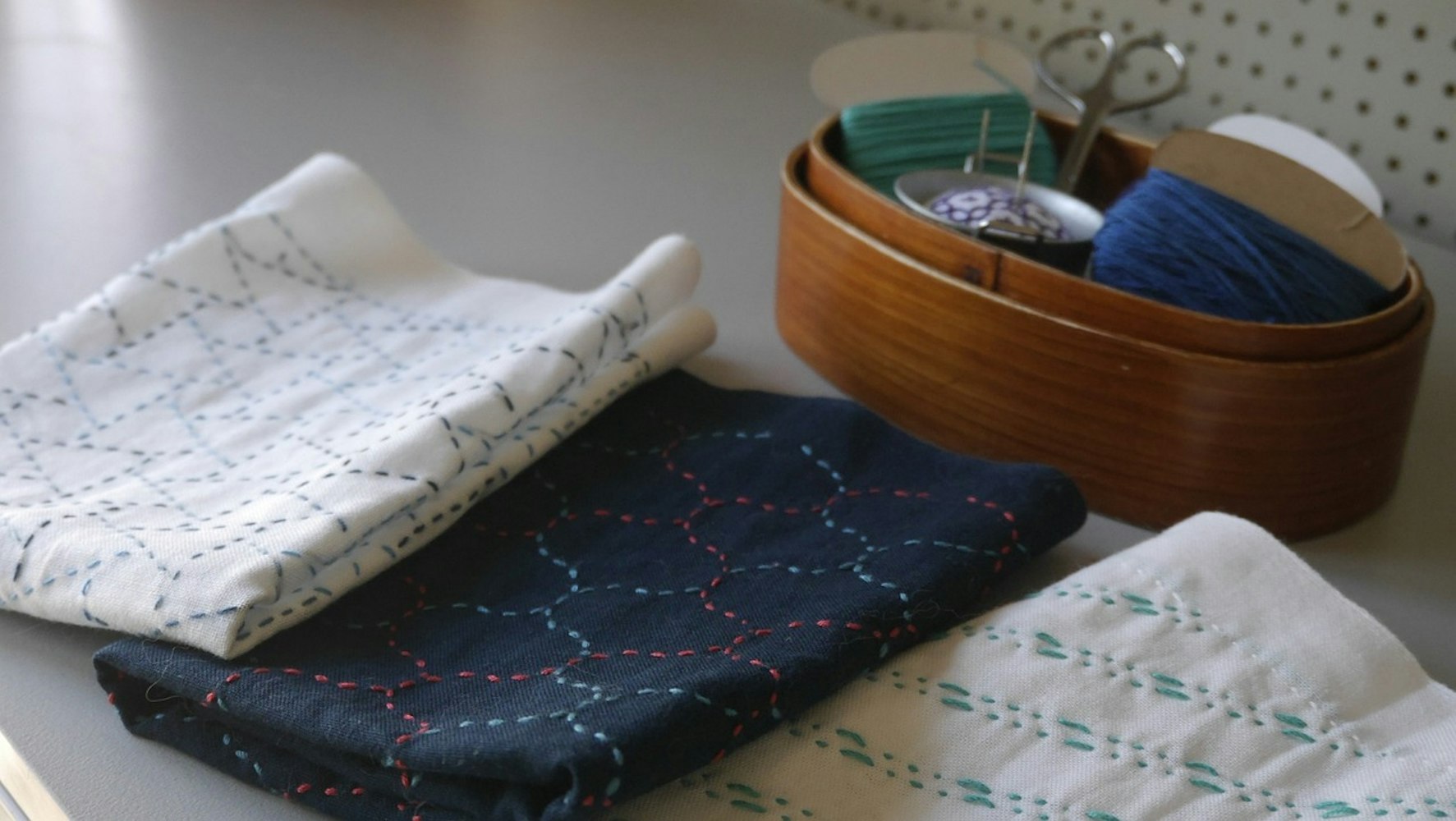
Image Credit: NaoYuasa
Sashiko, meaning 'little stabs,' evolved as a companion to Boro, and is a form of decorative reinforcement stitching. It involves a simple running stitch that forms intricate, geometric patterns. Originally, Sashiko was used to reinforce points of wear or to repair torn areas on garments, creating durable layers of fabric for better insulation. Over time, the practical function of these stitches evolved into an aesthetic expression, transforming everyday textiles into works of art.
The practices of Boro and Sashiko are grounded in two profound Japanese cultural values: 'mottainai' and 'wabi-sabi.' Mottainai embodies a sense of regret concerning waste, reflecting the importance of resourcefulness and recycling. This principle is clearly reflected in the creation of Boro textiles, where every piece of fabric, no matter how small, is deemed valuable and worthy of use.
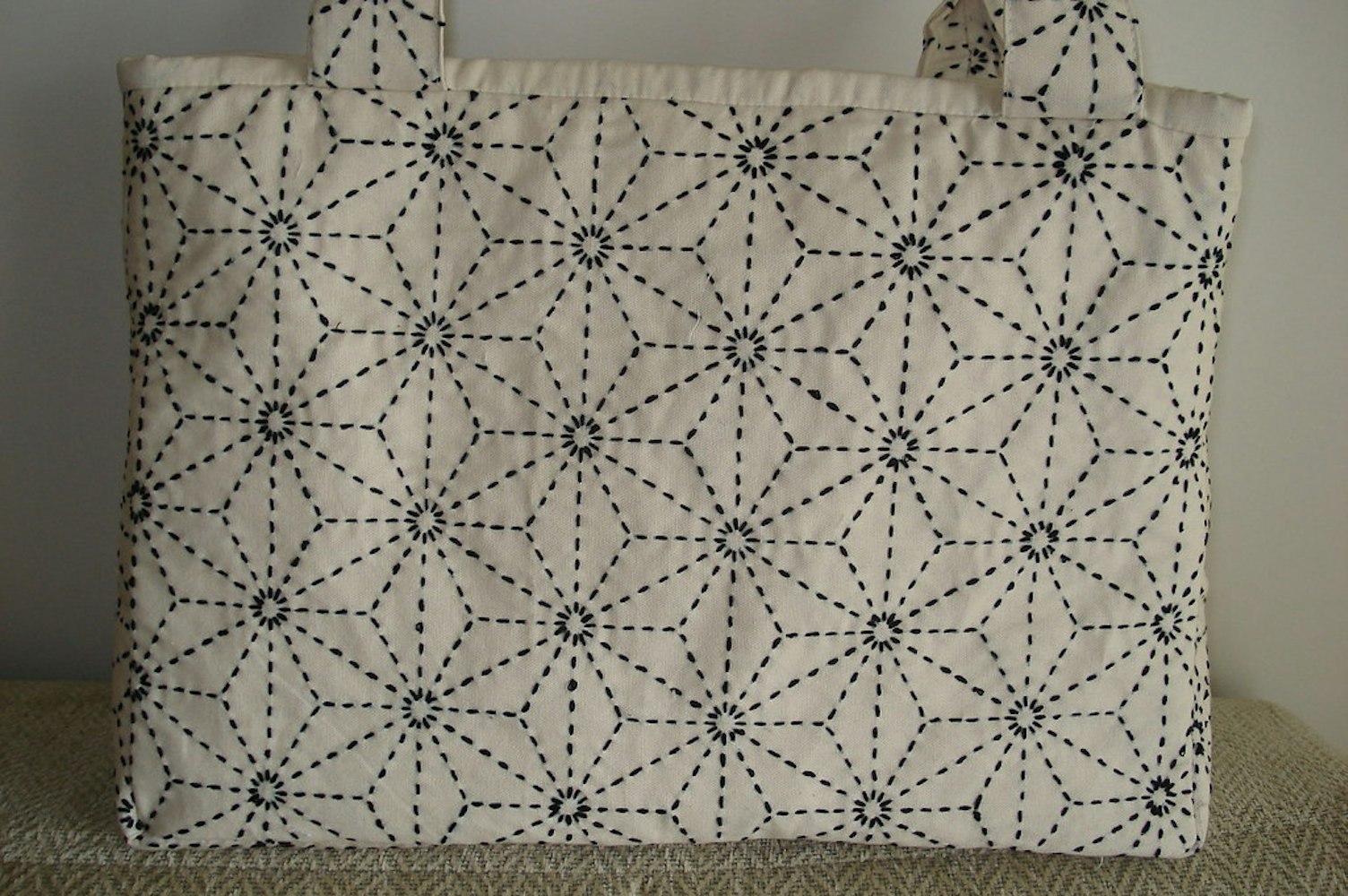
Image Credit: Zulemyan Nadya
On the other hand, 'wabi-sabi' represents a world view centered on the acceptance of transience and imperfection. This philosophy is evident in the intricate stitching of Sashiko, where each stitch showcases the beauty inherent in objects that are simple, modest, and aged. By mending worn fabric, Sashiko highlights the beauty of the repair, emphasizing that imperfections are not flaws to be hidden but stories to be honored. Therefore, through Boro and Sashiko, one doesn't merely observe a physical transformation of textiles but also engages with a mindset that respects the past, values the present, and contributes to a sustainable future.
Located in Aichi Prefecture, the town of Arimatsu is synonymous with the centuries-old craft of Shibori, a form of tie-dyeing that creates intricate patterns on fabric. Founded in the early 17th century, Arimatsu quickly emerged as a hub for Shibori due to its position along the old Tokaido road, which connected Tokyo and Kyoto. This strategic location facilitated the distribution of Shibori textiles, contributing to their popularity.
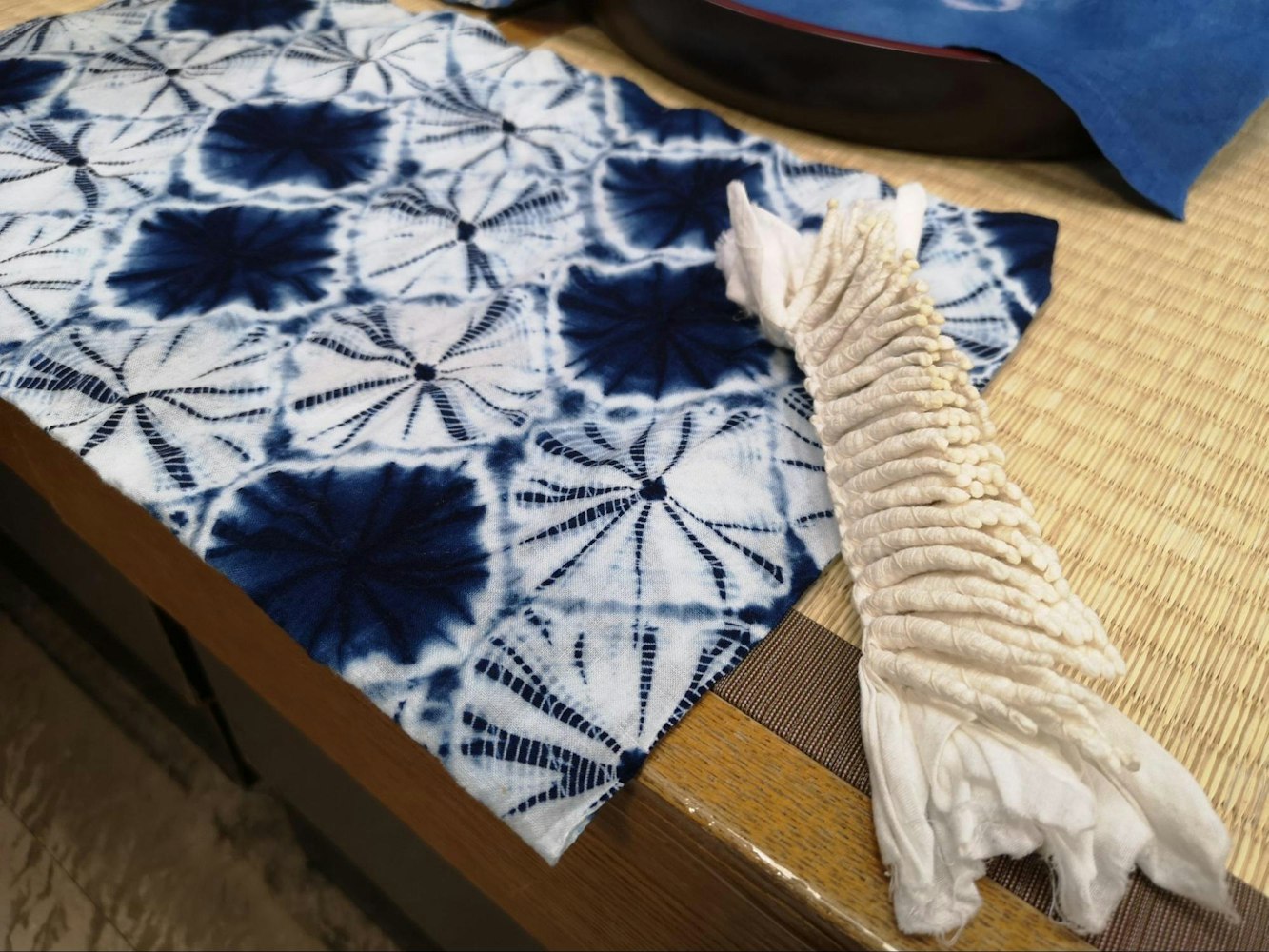
The Shibori process involves the meticulous folding, twisting, or bunching of cloth, which is then secured with thread or rubber bands before dyeing. Each manipulation imparts a distinct pattern, resulting in a stunning array of designs once the bindings are removed post-dyeing. The beauty of Shibori lies in the delicate interplay between control and serendipity. While artisans command the tying and stitching process, the final result is always a surprise, revealed only after the dye has been applied and the bindings have been removed.
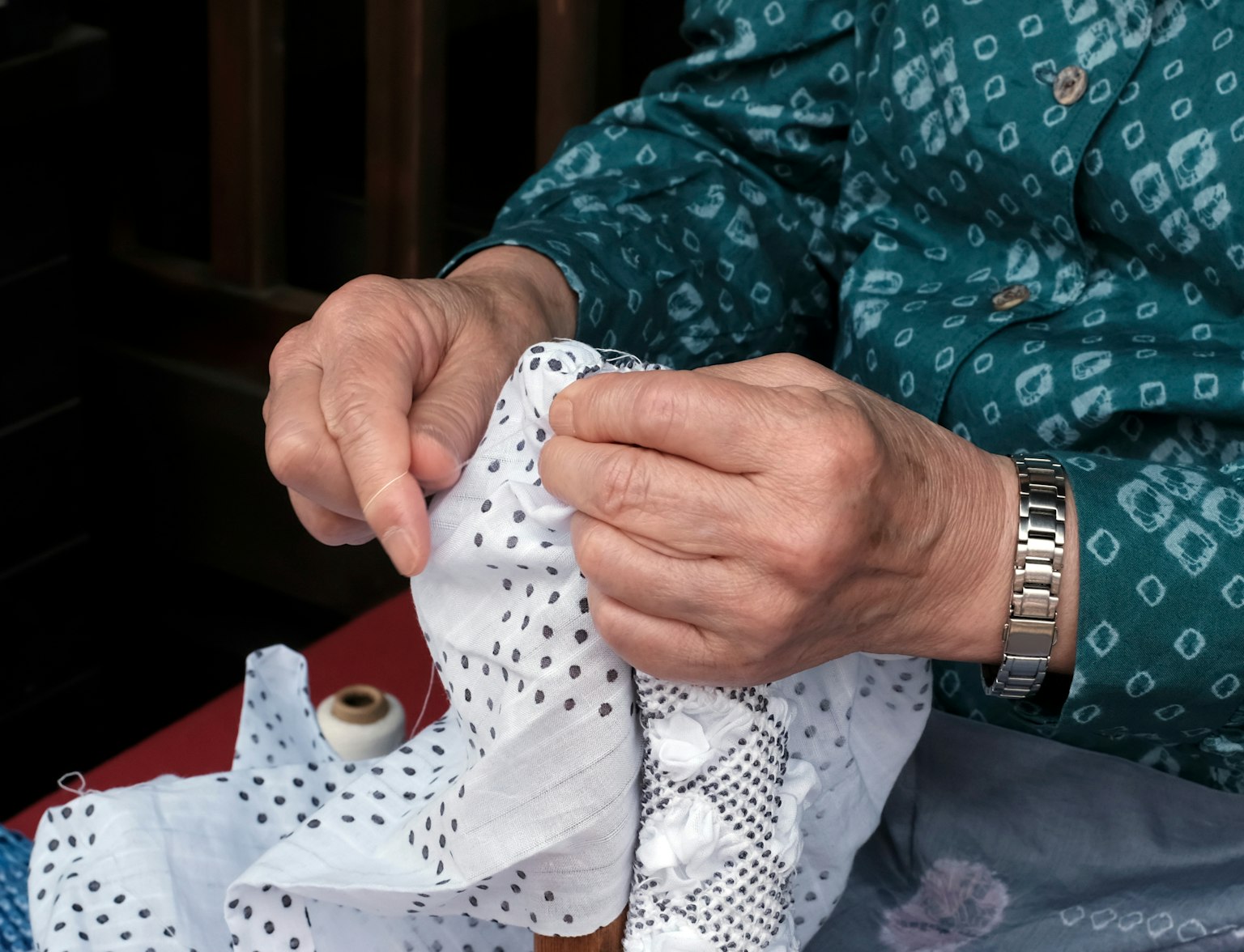
Discover the centuries-old art of Shibori tie-dyeing.
The Arimatsu Shibori Festival, held annually in early June, celebrates the rich tradition of Shibori. During the festival, the usually quiet streets of Arimatsu transform into a vibrant spectacle, bustling with locals and tourists alike. Visitors can expect a delightful immersion into the world of Shibori, with numerous vendors displaying and selling a wide range of Shibori textiles, from yukatas and scarves to table runners and wall hangings.

One of the festival highlights is the hands-on Shibori workshops, where participants can learn the basics of this art form under the guidance of skilled artisans. Here, one can truly appreciate the intricacy and effort involved in creating Shibori textiles. The festival also features parades showcasing traditional music and dance, and people dressed in historical costumes, encapsulating the enduring charm of Arimatsu and its beloved craft. The Shibori Festival is more than a celebration of a textile art form; it is an invitation to experience first-hand the cultural heritage of a town steeped in history and tradition.
The world of traditional Japanese textiles is rich, fascinating, and filled with a depth of meaning that transcends the aesthetic beauty of these fabrics. Through kimonos, noren, Boro, Sashiko, and Shibori, we can witness not only the incredible craftsmanship that has been cultivated over centuries but also the cultural narratives and philosophies that permeate every thread and dye. Each of these textiles is a testament to the intricacy of Japanese culture, embodying values such as resourcefulness, respect for nature, and the celebration of imperfection.
As you journey through Japan, let the language of these textiles guide your exploration. From the vibrant kimonos reflecting personal stories and societal roles to the Shibori textiles from Arimatsu narrating the harmony of control and serendipity – each piece invites you to delve deeper, offering a connection that transcends the physical. By engaging with these traditional fabrics, you're not just observing artifacts; you're stepping into stories that unravel Japan's rich history and cultural depth, creating a travel experience that is truly unforgettable.



